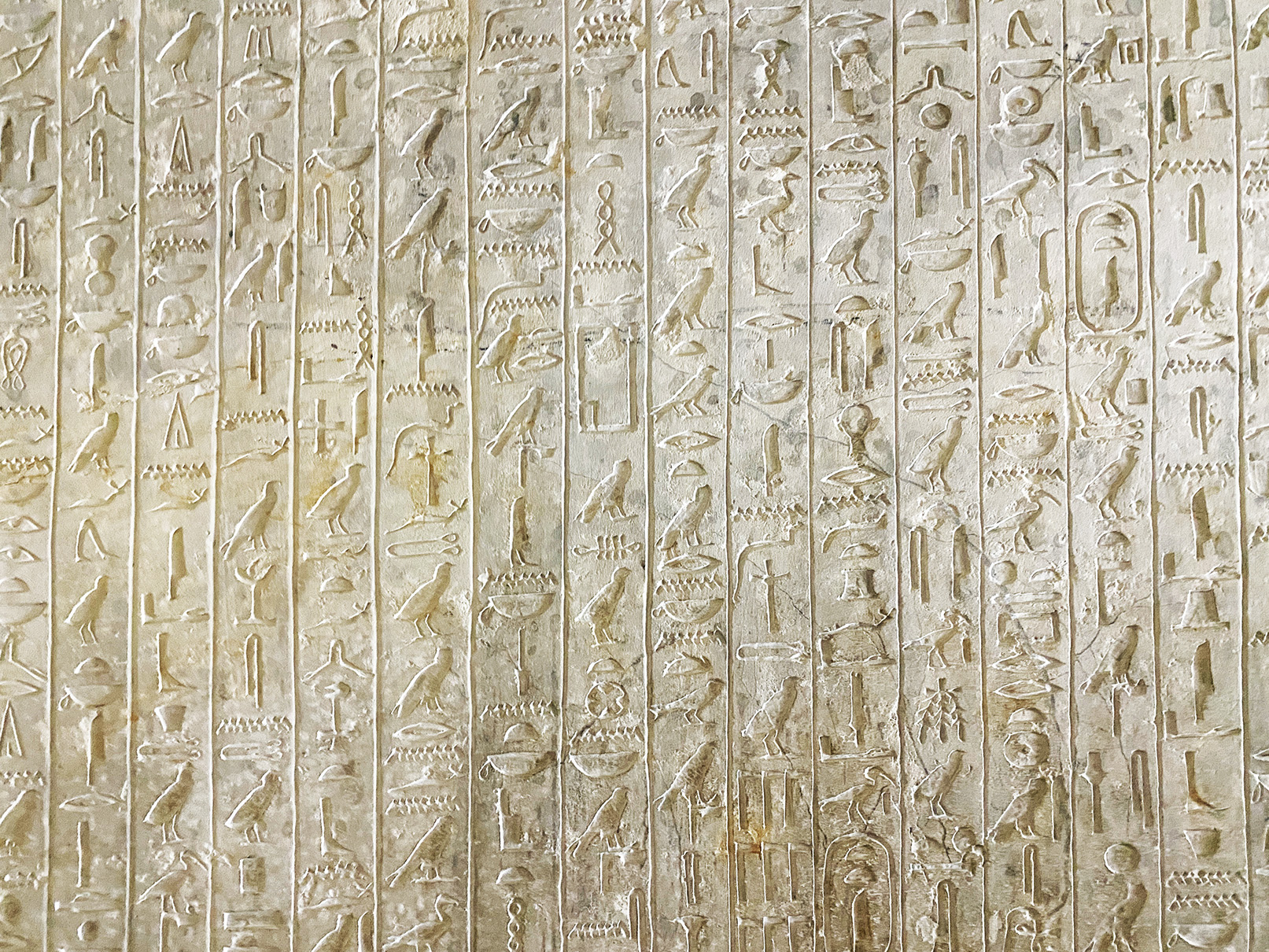Difference between revisions of "Template:POTD protected"
Occultwiki (talk | contribs) |
Occultwiki (talk | contribs) |
||
| Line 1: | Line 1: | ||
{| role="presentation" style="margin:0 3px 3px; width:100%; text-align:left; background-color:transparent; border-collapse: collapse; " | {| role="presentation" style="margin:0 3px 3px; width:100%; text-align:left; background-color:transparent; border-collapse: collapse; " | ||
|style="padding:0 0.9em 0 0;" | [[File: | |style="padding:0 0.9em 0 0;" | [[File:Pyramid-Texts-Teti.jpg|300px]] | ||
|style="padding:0 6px 0 0"| | |style="padding:0 6px 0 0"| | ||
'''[[ | The '''[[Pyramid Texts]]''' are the oldest ancient Egyptian funerary texts, dating to the late Old Kingdom. They are the earliest known corpus of ancient [[Egyptian religion|Egyptian religious]] texts. Written in Old Egyptian, the pyramid texts were carved onto the subterranean walls and sarcophagi of pyramids at Saqqara from the end of the Fifth Dynasty, and throughout the Sixth Dynasty of the Old Kingdom, and into the Eighth Dynasty of the First Intermediate Period. | ||
The oldest of the texts have been dated to c. 2400–2300 BC. Unlike the later Coffin Texts and Book of the Dead, the Pyramid Texts were not illustrated. | |||
The use and occurrence of Pyramid Texts changed between the Old, Middle, and New Kingdoms of Ancient Egypt. During the Old Kingdom (2686 BCE – 2181 BCE), Pyramid Texts could be found in the pyramids of kings as well as three queens, named Wedjebten, Neith, and Iput. | |||
<p><small> | <p><small>Photographer: [[Travis McHenry]]</small></p> | ||
[[:Category:Images|'''(More Images)''']] | [[:Category:Images|'''(More Images)''']] | ||
<div class="potd-recent" style="text-align:right;"> | <div class="potd-recent" style="text-align:right;"> | ||
Revision as of 18:53, 6 December 2022

|
The Pyramid Texts are the oldest ancient Egyptian funerary texts, dating to the late Old Kingdom. They are the earliest known corpus of ancient Egyptian religious texts. Written in Old Egyptian, the pyramid texts were carved onto the subterranean walls and sarcophagi of pyramids at Saqqara from the end of the Fifth Dynasty, and throughout the Sixth Dynasty of the Old Kingdom, and into the Eighth Dynasty of the First Intermediate Period. The oldest of the texts have been dated to c. 2400–2300 BC. Unlike the later Coffin Texts and Book of the Dead, the Pyramid Texts were not illustrated. The use and occurrence of Pyramid Texts changed between the Old, Middle, and New Kingdoms of Ancient Egypt. During the Old Kingdom (2686 BCE – 2181 BCE), Pyramid Texts could be found in the pyramids of kings as well as three queens, named Wedjebten, Neith, and Iput. Photographer: Travis McHenry |